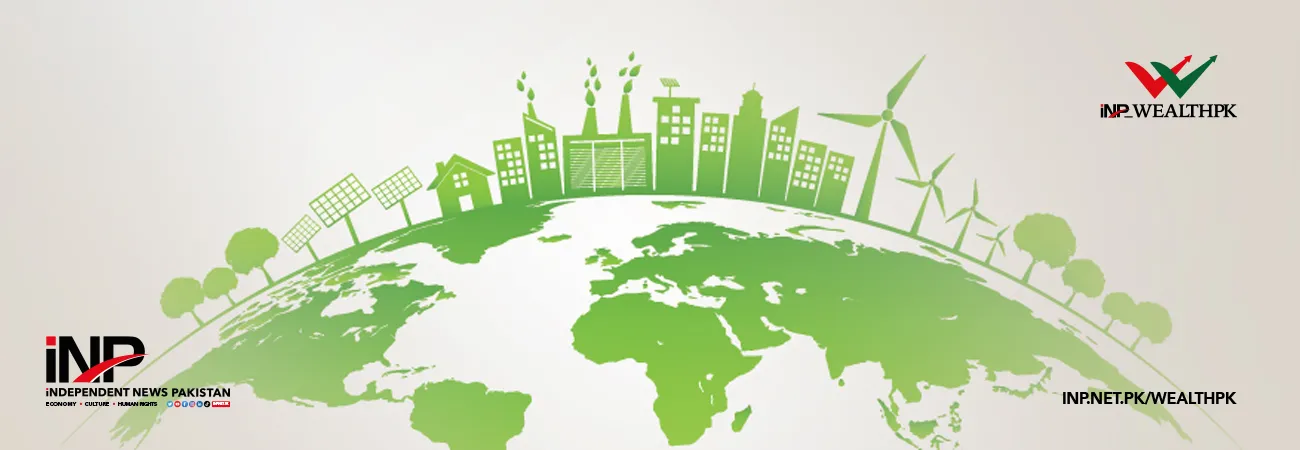INP-WealthPk
By Qudsia Bano
ISLAMABAD, Nov 01 (INP-WealthPK): Pakistan’s automobile sector has been doing a roaring business for several decades, with consumers being able to buy high-quality vehicles at affordable prices, despite the fact that their primary preference is for imported second-hand vehicles.
The auto sector has lately hit a new level of sales in the four-wheeler passenger category, brightening up the future of this sector.
The stakeholders are optimistic about growth of this sector in the coming months as far as the sale numbers are concerned.
According to the sales figures published by the Pakistan Automotive Manufacturers Association (PAMA), the local automobile sector grew by 62 percent on a year-over-year basis (YoY) to 181,397 units in Fiscal Year 2021 (FY21), up from 111,965 units the previous year.
The current low interest rates, economic recovery, significant growth potential, and rising per capita income are the reasons for the automobile and motorbike industries' excellent performance.
According to the State Bank of Pakistan's quarterly report, Pakistan's automobile sector saw double-digit growth of 23.4 percent from July 2020 to March 2021, dramatically improving from a decline of 37.7% during the same period last year (SBP).




 (https://www.pama.org.pk/images/stories/pdf/production-sales.pdf)
When is the best moment to invest in the auto industry?
Jian Peng (Philip), Chief Representative of Pakistan Shenglin Consulting Co (PSC), has been discussing the viability of investment and production capability transfer to Pakistan.
He says, “Pakistan is a window for China to the rest of the globe, as well as a bridge and link for Chinese products and technologies to connect to the rest of the world. The growth of the automobile industry is a reflection of a country's overall national strength as well as an essential economic indicator.”
The upstream of this massive industrial chain, which drives the national economy, includes raw materials such as steel, oil, and rubber, the middle stream includes processing and manufacturing, machinery and equipment, and peripheral supporting industries, while the downstream reaches the market, retail, and consumer finance. Moreover, according to the PSC representative, the manufacturing and marketing process of one vehicle in Pakistan can provide employment for around 20 to 30 people. The reason is that the whole manufacturing process takes human involvement based on knowledge, skills and abilities.
An increase in output in the car sector also has the benefit of attracting newcomers to component manufacture. Currently, only a small part of components are manufactured in Pakistan, forcing assemblers to import components that should be produced in Pakistan. However, with increased production, new entrants and existing businesses will find it far more practical to invest in auto component manufacturing. This will assist both the auto industry and the consumer.
Second-hand automobile imports have harmed Pakistan's auto assembly industry, and they should be outlawed entirely because they do not create new assembly employment and put a strain on our foreign exchange reserves.
Also, why create a market in Pakistan for second-hand vehicles from Japan and Thailand at the expense of our own auto industry? Lowering the import duty to 15% across the board will significantly slash vehicle sales prices in Pakistan, making local automobiles more affordable to all, including those who now buy used imported vehicles.
Pakistan's auto sector is still in its infancy and requires government assistance, not in the form of subsidies, but in the form of a consistent policy that has been unaltered for several years. Lower labour costs and a consistent auto policy might turn Pakistan into a regional auto manufacturing powerhouse for Japanese, Korean, European, and other automobiles, as well as a launch-pad for vehicle exports to Central Asia, the Middle East, and other regional markets. Pakistan is now poised to become a major auto-export powerhouse, creating millions of new employees in the process.
Pakistan's car sector enterprises, particularly local assemblers, offer huge expansion and job-creation potential. An increase in output in the car sector also has the benefit of attracting newcomers to component manufacture. Currently, only a small part of components are manufactured in Pakistan, forcing assemblers to import components that should be produced in Pakistan. However, with increased production, new entrants and existing businesses will find it far more practical to invest in auto component manufacturing.
Hence, the most significant distinction between Pakistani and Chinese vehicles is that Pakistan has a right-rudder vehicle market, which means many Chinese automakers are still hesitant to completely enter the Pakistani market.
According to Jian Peng, if cooperation between the Chinese and Pakistani automobile industry faces the international consumer market, and Chinese companies can transplant the European and American standards they have learned to Pakistan, cars assembled in Pakistan can expand the left-rudder car market.
The Pakistani R&D institutions, universities, scientific research institutions, and supporting suppliers can strengthen cooperation with China to seek technological landings and breakthroughs.
(https://www.pama.org.pk/images/stories/pdf/production-sales.pdf)
When is the best moment to invest in the auto industry?
Jian Peng (Philip), Chief Representative of Pakistan Shenglin Consulting Co (PSC), has been discussing the viability of investment and production capability transfer to Pakistan.
He says, “Pakistan is a window for China to the rest of the globe, as well as a bridge and link for Chinese products and technologies to connect to the rest of the world. The growth of the automobile industry is a reflection of a country's overall national strength as well as an essential economic indicator.”
The upstream of this massive industrial chain, which drives the national economy, includes raw materials such as steel, oil, and rubber, the middle stream includes processing and manufacturing, machinery and equipment, and peripheral supporting industries, while the downstream reaches the market, retail, and consumer finance. Moreover, according to the PSC representative, the manufacturing and marketing process of one vehicle in Pakistan can provide employment for around 20 to 30 people. The reason is that the whole manufacturing process takes human involvement based on knowledge, skills and abilities.
An increase in output in the car sector also has the benefit of attracting newcomers to component manufacture. Currently, only a small part of components are manufactured in Pakistan, forcing assemblers to import components that should be produced in Pakistan. However, with increased production, new entrants and existing businesses will find it far more practical to invest in auto component manufacturing. This will assist both the auto industry and the consumer.
Second-hand automobile imports have harmed Pakistan's auto assembly industry, and they should be outlawed entirely because they do not create new assembly employment and put a strain on our foreign exchange reserves.
Also, why create a market in Pakistan for second-hand vehicles from Japan and Thailand at the expense of our own auto industry? Lowering the import duty to 15% across the board will significantly slash vehicle sales prices in Pakistan, making local automobiles more affordable to all, including those who now buy used imported vehicles.
Pakistan's auto sector is still in its infancy and requires government assistance, not in the form of subsidies, but in the form of a consistent policy that has been unaltered for several years. Lower labour costs and a consistent auto policy might turn Pakistan into a regional auto manufacturing powerhouse for Japanese, Korean, European, and other automobiles, as well as a launch-pad for vehicle exports to Central Asia, the Middle East, and other regional markets. Pakistan is now poised to become a major auto-export powerhouse, creating millions of new employees in the process.
Pakistan's car sector enterprises, particularly local assemblers, offer huge expansion and job-creation potential. An increase in output in the car sector also has the benefit of attracting newcomers to component manufacture. Currently, only a small part of components are manufactured in Pakistan, forcing assemblers to import components that should be produced in Pakistan. However, with increased production, new entrants and existing businesses will find it far more practical to invest in auto component manufacturing.
Hence, the most significant distinction between Pakistani and Chinese vehicles is that Pakistan has a right-rudder vehicle market, which means many Chinese automakers are still hesitant to completely enter the Pakistani market.
According to Jian Peng, if cooperation between the Chinese and Pakistani automobile industry faces the international consumer market, and Chinese companies can transplant the European and American standards they have learned to Pakistan, cars assembled in Pakistan can expand the left-rudder car market.
The Pakistani R&D institutions, universities, scientific research institutions, and supporting suppliers can strengthen cooperation with China to seek technological landings and breakthroughs.













